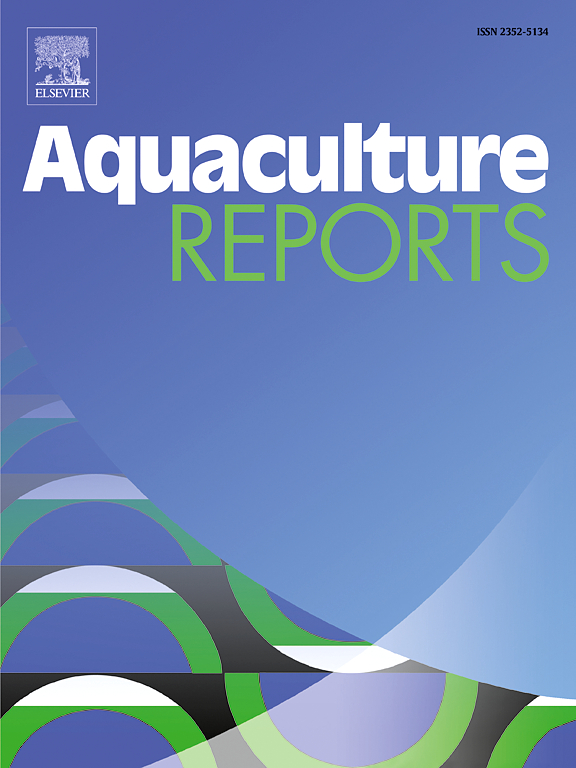How to mitigate high risks to secure more high-quality protein? Joint technological innovation strategies for offshore mariculture considering different power structures
IF 3.7
2区 农林科学
Q1 FISHERIES
引用次数: 0
Abstract
Offshore Mariculture (OM) represents a novel approach to alleviating inshore environmental pressure while meeting the growing demand for high-quality protein. The potential for unforeseeable risk losses during the operational process has seriously hindered the development of this industry. To better address the developmental challenges of offshore mariculture, this study incorporates various power structures and the role of information sharing. Focusing primarily on mitigating risk losses, it constructs a differential game model involving research institutions and offshore mariculture enterprises (OME) under four decision-making modes: centralized decision-making, decentralized decision-making without cost-sharing, research institution–driven decentralized decision-making, and enterprise-driven decentralized decision-making. The model is then analyzed through numerical simulations. The results of the study reveal the following: (1) It is generally difficult for OME and research institutions to form a central decision-maker capable of achieving the optimal outcomes of centralized decision-making. However, the revenue of the mariculture decision-making system, the level of information sharing, and the reduction in risk losses under the centralized mode can serve as optimal benchmarks. Compared with non-cooperative decentralized decision-making, decision-making modes driven by either party are wiser choices. (2) The dominant party between OME and research institutions varies across different development stages. As the cost of mariculture-related efforts declines, all key indicators of the decision-making system improve significantly in the mature stage compared to earlier phases. At this stage, OME tend to take the lead, yet maintaining the R&D motivation of research institutions remains practically relevant. (3) In the mature phase of OM development, governments can achieve more desirable outcomes with relatively lower R&D funding. Therefore, while adhering to the original intention of fostering early-stage development, government support can become more flexible during the mature stage.
如何降低高风险以获得更高质量的蛋白质?考虑不同权力结构的近海海水养殖联合技术创新战略
近海海水养殖(OM)代表了一种减轻近海环境压力的新方法,同时满足了对高质量蛋白质日益增长的需求。在操作过程中可能出现不可预见的风险损失,严重阻碍了该行业的发展。为了更好地应对近海海水养殖的发展挑战,本研究结合了各种权力结构和信息共享的作用。以降低风险损失为主要着眼点,构建了集中式决策、无成本分担的分散式决策、科研机构驱动的分散式决策和企业驱动的分散式决策四种决策模式下的科研机构与海洋养殖企业的差异博弈模型。然后通过数值模拟对模型进行了分析。研究结果表明:(1)OME和研究机构普遍难以形成一个能够实现集中决策最优结果的中央决策者。而集中式模式下海水养殖决策系统的收益、信息共享水平和风险损失的减少可以作为最优基准。与非合作的分散决策相比,任何一方驱动的决策模式都是更明智的选择。(2)在不同的发展阶段,OME与科研机构之间的主体存在差异。随着与海水养殖相关的成本下降,决策系统的所有关键指标在成熟阶段都比早期阶段有了显著改善。在这个阶段,OME倾向于发挥主导作用,但保持研究机构的研发动机仍然具有实际意义。(3)在OM发展的成熟期,政府投入相对较少的研发经费就能获得更理想的结果。因此,在坚持培育早期发展的初衷的同时,在成熟阶段,政府的支持可以变得更加灵活。
本文章由计算机程序翻译,如有差异,请以英文原文为准。
求助全文
约1分钟内获得全文
求助全文
来源期刊

Aquaculture Reports
Agricultural and Biological Sciences-Animal Science and Zoology
CiteScore
5.90
自引率
8.10%
发文量
469
审稿时长
77 days
期刊介绍:
Aquaculture Reports will publish original research papers and reviews documenting outstanding science with a regional context and focus, answering the need for high quality information on novel species, systems and regions in emerging areas of aquaculture research and development, such as integrated multi-trophic aquaculture, urban aquaculture, ornamental, unfed aquaculture, offshore aquaculture and others. Papers having industry research as priority and encompassing product development research or current industry practice are encouraged.
 求助内容:
求助内容: 应助结果提醒方式:
应助结果提醒方式:


